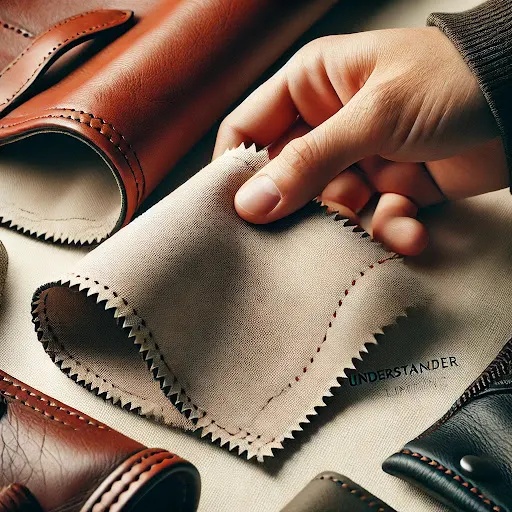Creating a belt from finished leather involves several steps to ensure the final product is durable, stylish, and well-crafted. Below is a general procedure for making a belt from finished leather:
1. Material and Equipment Gathering:
- Gather the necessary materials, including finished leather, a belt buckle, rivets, stitching tools, a cutting mat, a utility knife or leather scissors, a belt punch, and a ruler.
2. Design and Measurement:
- Decide on the desired length and width of the belt. Use a ruler to measure and mark the dimensions on the back of the finished leather. Add extra length for folding over and attaching the buckle.
3. Cutting the Leather:
- Using a utility knife or leather scissors, carefully cut the leather along the marked lines. Ensure the edges are straight and even for a professional finish.
4. Edging:
- Optionally, use an edge beveler or sandpaper to round the edges of the belt for a smoother, more polished look. Beveling helps prevent sharp edges.
5. Punching Holes:
- Use a belt punch to create evenly spaced holes along one end of the belt. These holes will be used for the belt buckle prong and are typically spaced about one inch apart.
6. Attaching the Buckle:
- Insert the belt prong through the end hole, fold over the end of the belt, and secure it by adding rivets or stitching. Ensure the buckle is centered and aligned.
7. Burning the Belt Tip (Optional):
- If you prefer a pointed or rounded belt tip, you can use a lighter to carefully heat and shape the tip. Be cautious not to burn the leather.
8. Adding Additional Holes (Optional):
- Punch additional holes along the length of the belt to provide flexibility for different waist sizes and styling options.
9. Stamping or Embossing (Optional):
- Personalize the belt by stamping or embossing it with a design or initials. This step can add a unique touch to the finished product.
10. Applying Finish (Optional):
11. Quality Check:
12. Final Presentation:









